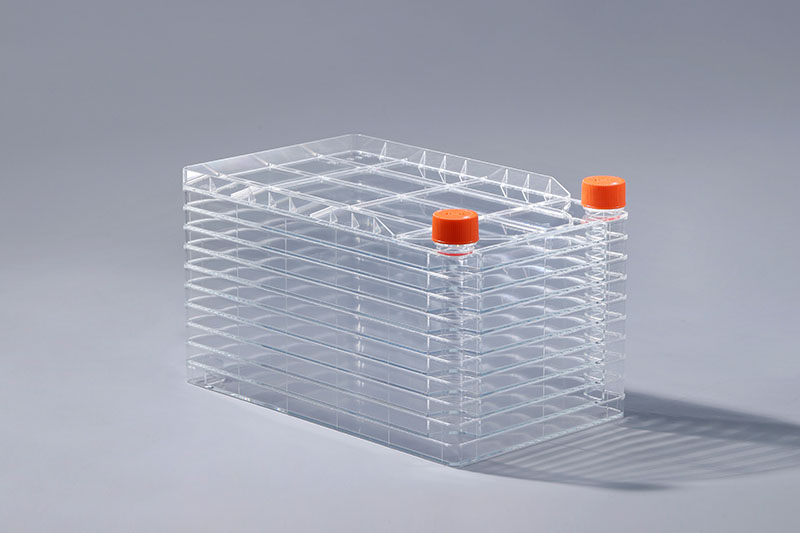Клеточная культура является важным и широко используемым методом в методах исследования клеточной биологии. С помощью клеточной культуры можно получить большое количество клеток, и с помощью клеточной культуры можно изучить трансдукцию клеточного сигнала, клеточный анаболизм, рост и пролиферацию клеток. В крупномасштабных клеточных культурах Фабрика клеток в основном подходит для культивирования различных прикрепляющихся клеток, таких как клетки Vero, клетки HEK 293, клетки CAR-T, клетки MRC5, CEF, свиные альвеолярные макрофаги, миелома клетки, клетки DF-1, клетки ST, клетки PK15, клетки Marc145 и другие прикрепленные клетки. Он также подходит для статического культивирования суспензионных клеток, таких как клетки CHO, клетки насекомых, клетки BHK21 и клетки MDCK. снижение вероятности загрязнения клеток. Он широко используется в разработке вакцин и промышленном производстве клеток. является эффективным и широко используемым расходным материалом для клеточных культур. , 10 слоев, 40 слоев и т. д. Слои соединяются специальным клеевым процессом, обеспечивающим прочность изделия. Чтобы улучшить гидрофильность поверхности контейнера и сделать ее более подходящей для роста и размножения клеток, этот расходный материал подвергнется специальной обработке поверхности, чтобы ввести гидрофильные группы на гидрофобную поверхность, чтобы улучшить прилипание клеток и облегчить клетки с низким Характеристики адгезии прилипают к стене.
The cell factory consists of one or more layers, the common ones are 1 layer, 2 layers, 5 layers, 10 layers, 40 layers, etc. The layers are connected by a special adhesive process to ensure the firmness of the product. In order to improve the hydrophilicity of the container surface and make it more suitable for cell growth and reproduction, this consumable will undergo special surface treatment to introduce hydrophilic groups on the hydrophobic surface to enhance the adherence of cells and make it easier for cells with low adhesion characteristics stick to the wall.
The cell factory is mainly suitable for the culture of a variety of adherent cells, such as Vero cells, HEK 293 cells, CAR-T cells, MRC5, CEF cells, porcine alveolar macrophages, myeloma cells, DF-1 cells, ST cells, PK15 cells, Marc145 cells and other adherent cells. It is also suitable for static culture of suspension cells such as CHO cells, insect cells, BHK21 cells and MDCK cells.
Using cell factories for large-scale cell culture can reduce space, save manpower, and have a larger culture area while reducing the possibility of cell contamination. It is widely used in vaccine development and cell industrial production.
The FAI climbed 5.9 percent year-on-year in the first 11 months of 2018, quickening from the 5.7-percent growth in Jan-Oct, the National Bureau of Statistics (NBS) said Friday in an online statement.
The key indicator of investment, dubbed a major growth driver, hit the bottom in August and has since started to rebound steadily.
In the face of emerging economic challenges home and abroad, China has stepped up efforts to stabilize investment, in particular rolling out measures to motivate private investors and channel funds into infrastructure.
Friday's data showed private investment, accounting for more than 60 percent of the total FAI, expanded by a brisk 8.7 percent.
NBS spokesperson Mao Shengyong said funds into weak economic links registered rapid increases as investment in environmental protection and agriculture jumped 42 percent and 12.5 percent respectively, much faster than the average.
In breakdown, investment in high-tech and equipment manufacturing remained vigorous with 16.1-percent and 11.6-percent increases respectively in the first 11 months. Infrastructure investment gained 3.7 percent, staying flat. Investment in property development rose 9.7 percent, also unchanged.
 English
English



















































